Four Reasons Why You Need to Eat Meat Only on Rare Occasion or Not At All
By Dr. Ashraf Girgis ND.
|
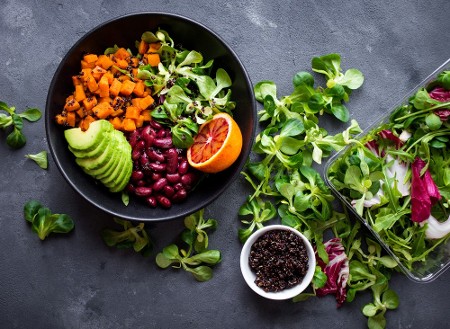
|
I remember seeing a tweet that profoundly affected me and most likely thousands of other receivers. It was about a crying little girl refusing to eat meat. She says she doesn’t want it because it was done by killing animals. Fish was suggested to her, and she thought for a second that she could accept it. As soon as she realized fish was also an animal, she started crying again. She refused to eat it because she didn’t wanted to kill anything.
Just think about this for a minute? NOT killing anything for food! Well, I don’t want turn this article into a sentimental journey but, not only killing animals is a concern of millions, environmental costs are a concern as well.
Yes, true, we as a human species are made for eating both vegetables and meat. It is ok if, like me, you love your kabobs, burgers, and your filet mignons. However, eating it sporadically and only once in while is good for many reasons.
|
|
|
|
|
Here are a few
1. Recently, scientists demonstrated metabolites of L-carnitine resulted from eating red meat. Scientists were able to demonstrate that ingestion of L-carnitine by intestinal microbiomes is associated with atherosclerosis in people who eat meat. However, similar results are not seen in vegetarians. We know coronary heart disease (CAD) is the leading cause of death in the United States and also globally. Atherosclerosis results from gradual damage to the endothelial cells that line the entire vascular system, including the heart. This results in cardiovascular diseases.
2. Lately, scientists have focused on the true cost of eating meat, not only on our health, but on the environment as well. According to the environmentally conscious website, Inhabitat.com, we globally consume 308.2 million tons of meat every year. Asian nations and mostly small farms are the main producers of 87% of livestock. Consumers are generally from the industrial nations as opposed to developing nations, which use only 33.5%. The average amount of water per one dairy cattle is about 2053 m3 (per year per animal) which is a huge amount. According to researchers, the total crops fed to animal could feed 4 billion people instead. Last but not the least, the livestock industry is responsible for 18% of global greenhouse gas emissions.
For more about the real cost of eating meat visit:
https://inhabitat.com/infographic-the-true-environmental-cost-of-eating-meat/
|
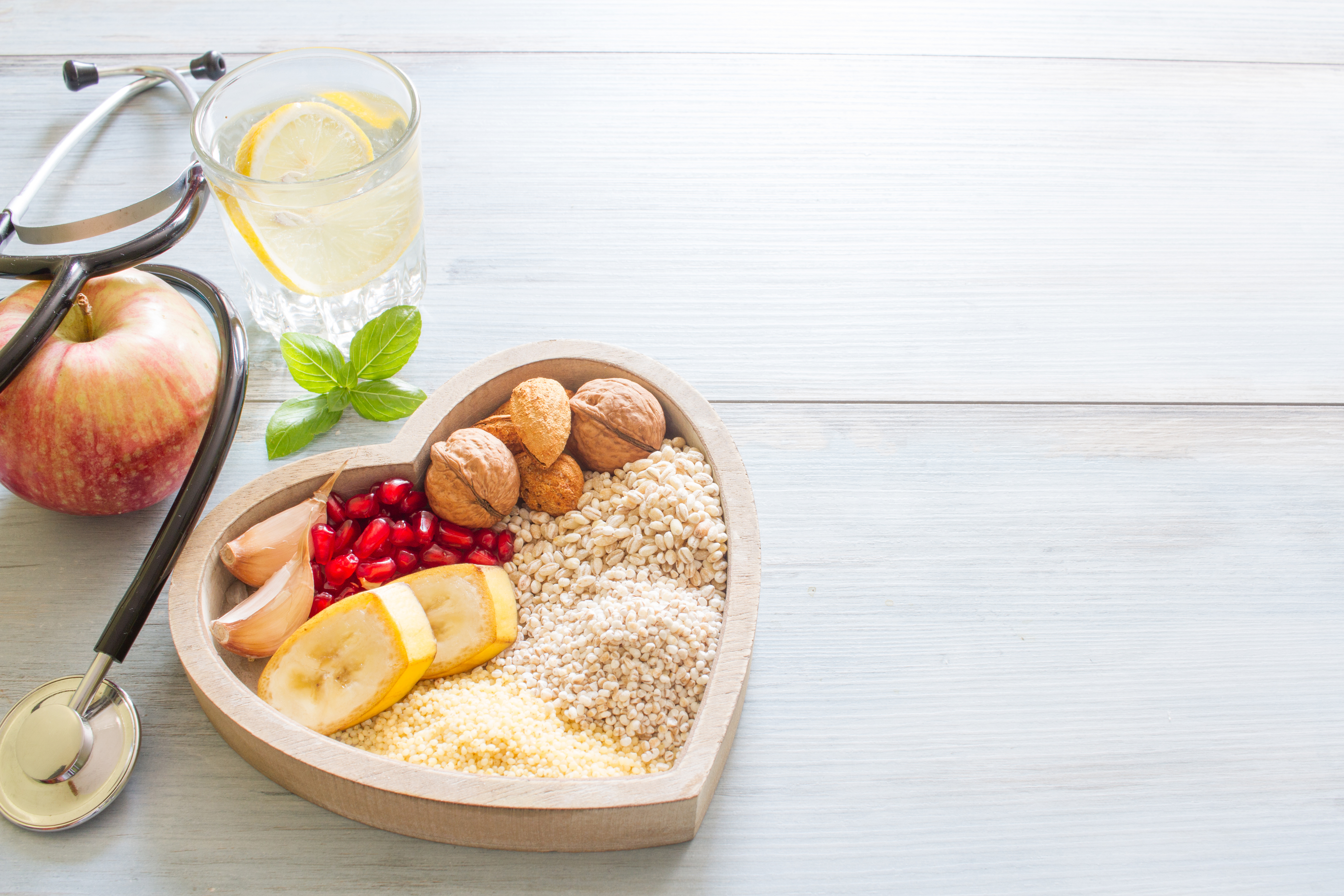 |
|

|
3. According to Harvard scientists, there is increased risk of type 2 adult diabetes when linked with eating red meat. Harvard public health professor Frank Hu and An Pan analyzed a study of health care professionals who were followed for 14 to 28 years. They found out there is 19% increased of risk of adult onset of type 2 diabetes among those who eat red meat no bigger in size than deck of card on a daily basis. This risk jumped up to a whopping to 51% if the red meat is processed such as in hot dogs or bacon. The scientists contributed this to saturated fats, in addition to three components of red meat: sodium, nitrate, iron. Sodium not only increases blood pressure, but also impairs function of the beta cells in the pancreas, therefore increasing insulin resistance. As for iron, despite its beneficial and important essential purpose as a mineral, a high level can lead to oxidative stress resulting in cell damage and chronic inflammation in some people. According to a statistic by the CDC, in 2015 9.4% of Americans had diabetes. This means 30.2 million Americans over the age of 18 and over suffer from type 2 diabetes. Although type 2 diabetes is multifactorial, eating red meat and meat in general seem to be playing a big factor, in addition to a sedentary lifestyle and stress among others reasons.
|
|
4. According to the World Health Organization (WHO), there a is significant increase in the number of cancer appearances in people who consume meat. Cancer is the second leading cause of death in the United States, following heart disease. The reason given is because meat has a high level of saturated animal fat. High levels of fat, not only as stated above can cause atherosclerosis, but it can contribute to increase in hormone levels This can cause breast or prostate cancer. Animal meat also lacks fiber, which is significant in keeping the bowel nice and clean to perform its numerous important functions. Processed meat contain some cariogenic compounds such as polycyclic aromatic hydrocarbons (PAH) and heterocyclic amines (HCA). These carcinogens are added through processing or cooking meat. Interestingly, research has shown those who are vegetarian have less likely to develop cancer. Researchers studied Seventh-Day Adventists group who have very healthy lifestyle. They avoid alcohol, tobacco, and many among them are vegetarians. Overall, researchers noticed significant reductions in cancer risk among those who avoided meat. Harvard researchers concluded meat eaters most likely have a three times higher chance of getting colon cancer in comparison to vegetarians, or those who eat less meat.
You might say, “Come on eating meat is not new. It has been going on as long as humanity has existed”. This is very true; however, populations across the world have increased and so has the desire to produce more meat in less time. It is more normal to use hormones, chemicals, and unsanitary methods in farming and meat production that are less than desirable.
You may be concerned about the threat of cardiovascular disease, cancer, or diabetes. You may also not want to contribute to the cost of meat production and add of greenhouse effects. But how can you get proteins from vegetarian sources?
My suggestion is if you like meat you can eat it but, scarcely. After all, our ancestors walked all day. They lived as tribes and mostly ate greens, nuts, and fruits. When they did had a chance to get meat by killing animals, they had to share it throughout the whole tribe, meaning small amounts of meat were consumed.
|
 |
 |
Protein
Protein is very important for all types of function in our body. Next to water, protein is the most abundant substance in our body. It is life’s building block. The molecular activities of our cells depend in large part on proteins. It is needed in every function of our body, from growth and cell repair to production of enzymes and hormones, such as insulin and thyroid hormones.
Proteins are also important for the production of antibodies and are essential in nerve and cellular repair. They also play an essential role in digestion and are important for our memory function and all other neural activities. In order for proteins to be made in our body, we need all of the essential amino acids to be present for the synthesis to take place.
There are 20 different amino acids that make up all our bodies proteins. Nine of them are called “essential”. The reason they are essential is because the body cannot produce them and must obtained from food. Most of these essential amino acids can be obtained from animal products such as meat, fish, dairy products, and eggs. But, we can also obtain these essential amino acids from vegetarian sources. Some vegetarian sources of proteins are called “complete” because they have all the nine amino acids contained in animal sources. Below, I have provided some examples.
|
|
Quinoa
Quinoa originated from South America. Currently, Peru is the largest exporter and producer of quinoa, and Bolivia is the second largest producer in the world. It is known as a sacred food. Quinoa is not a grain, but rather belongs to the family of members of the Amaranthaceae-Chenopodiaceae plant family (which includes spinach, chard, and beets). Quinoa is one of the very healthy sources of vegetarian protein. One cup of quinoa contain 4.4 grams of protein and is filled with antioxidants and phytonutrients. Sine it is so healthy and full of nutrients, NASA scientists have been trying to grow it in space.
The two flavonoids found in quinoa in very concentrated forms are quercetin and kaempferol. These phytonutrients play a significant role as anti-inflammatory agents. There are also small amounts of Omega 3 fatty acids, alpha-linolenic acid (ALA), manganese, magnesium, copper and folic acid. Cooking does not seem to lessen vitamins and nutrients in quinoa. Three quarters of a cup can provide 21% of the needed fiber, and according to the USDA nutrient database, one cup of cooked quinoa contains 8.14 grams of protein. Quinoa is a complete protein which means it has all the nine essential amino acids that the body needs to get through food. It is also gluten free and can be used for replacing gluten with grains. Quinoa is an excellent source of fiber, vitamin B2 (Riboflavin) and iron. Because of its fiber content, it reduces the risk of high blood pressure and type 2 diabetes. A study published in the European Journal of Nutrition in August 2004 showed triglyceride concentrations were significantly reduced. There is a protective coating called saponin covering quinoa. Although most quinoa at the grocery store are pre-rinsed, I suggest to soak the grain for half an hour or even overnight and then rinse it to get rid of the saponin. Saponins can be irritating to the stomach and cause pain, so make sure to rinse it well before cooking.
|
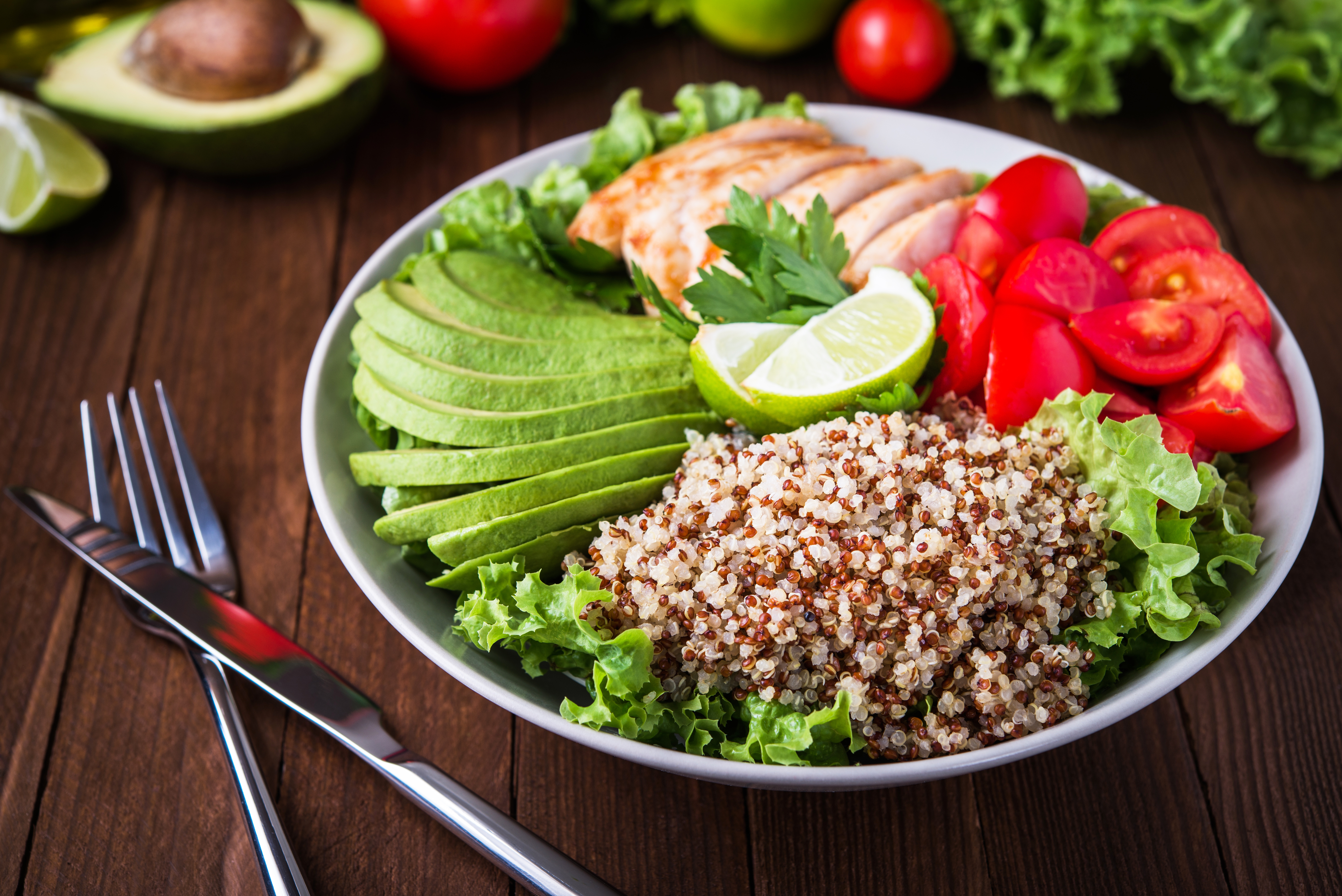 |
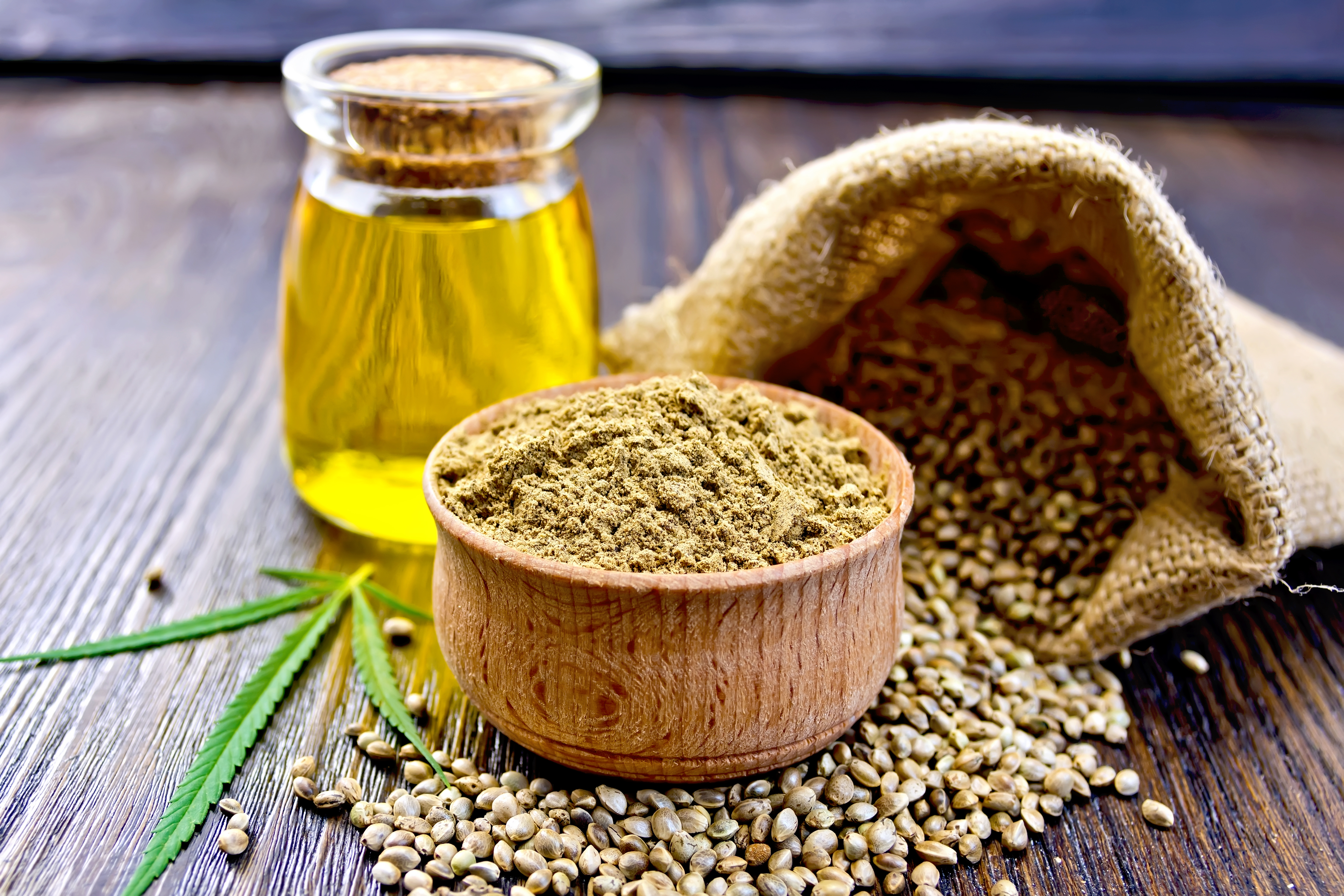 |
Hemp
Hemp is a plant that is used for variety of purposes, from clothes to nutritional products such as hemp oil and hemp seeds. It is also one of the good and complete sources of protein, meaning it has all the nine amino acids that are in meat. It helps lower LDL (bad) cholesterol and improves hormonal functions such as prostaglandins that lower inflammation. In a study published in the Journal of Arthritis and Rheumatism, six months of taking Gamma linolenic acid (GLA), which is present in hemp seed, lowered the symptoms of rheumatoid arthritis by 25%. Hemp seed has been used in Korean and Chinese herbal medicine for centuries for treatment of atopic dermatitis, inflammation, and rheumatoid arthritis. Because hemp seed contains insoluble fiber, it can help keep bowel movements regular. Its anti-cancer effect has been published in the british Journal of Cancer, reporting its possible impact in reversing or stopping of glioblastoma multiforme (a deadly form of brain cancer). Others have found beneficial effects in advanced breast cancer (Journal of Breast Cancer Research) and lung cancer (University of Rostock in Germany). Hemp seed has minerals such as Ca, Mg, phosphate, iron, zinc, and vitamins such as A, B, D, and E among others. Three tablespoon of hemp seeds provide 11 grams of protein, so I encourage sprinkling 2-3 spoons of Hemp seeds on your salad or cereal to get its benefits. Hemp seeds can be found in health food stores.
|
|
Chia
The word Chia means strength. It is grown mainly in Mexico and South American countries. In the United States, we are familiar with Chia from the commercial with furry little porcelain animal covered by chia. In Iran, it gets mixed with some special syrup in summer time to make a cool summer drink.
However, Chia, as its name implies has many benefits that can strengthen our body. It is a very good source of protein and contains antioxidants such as Omega 3 in greater quantities than flax seed can offer. In two tablespoons of Chia, there are six grams of protein, and its antioxidant content is even higher than blueberries. Chia contains calcium and it is good source of fiber because of its gel characteristic that gets expended in the stomach. As a result, it creates a sensation of fullness that is beneficial in weight loss. However, in a 12 week study at Appalachian State University in North Carolina, it did not show any reduction in weight. It is very important to be cautious if you are on any blood thinner medications or have allergies to mustard seed or sesame seed.
|
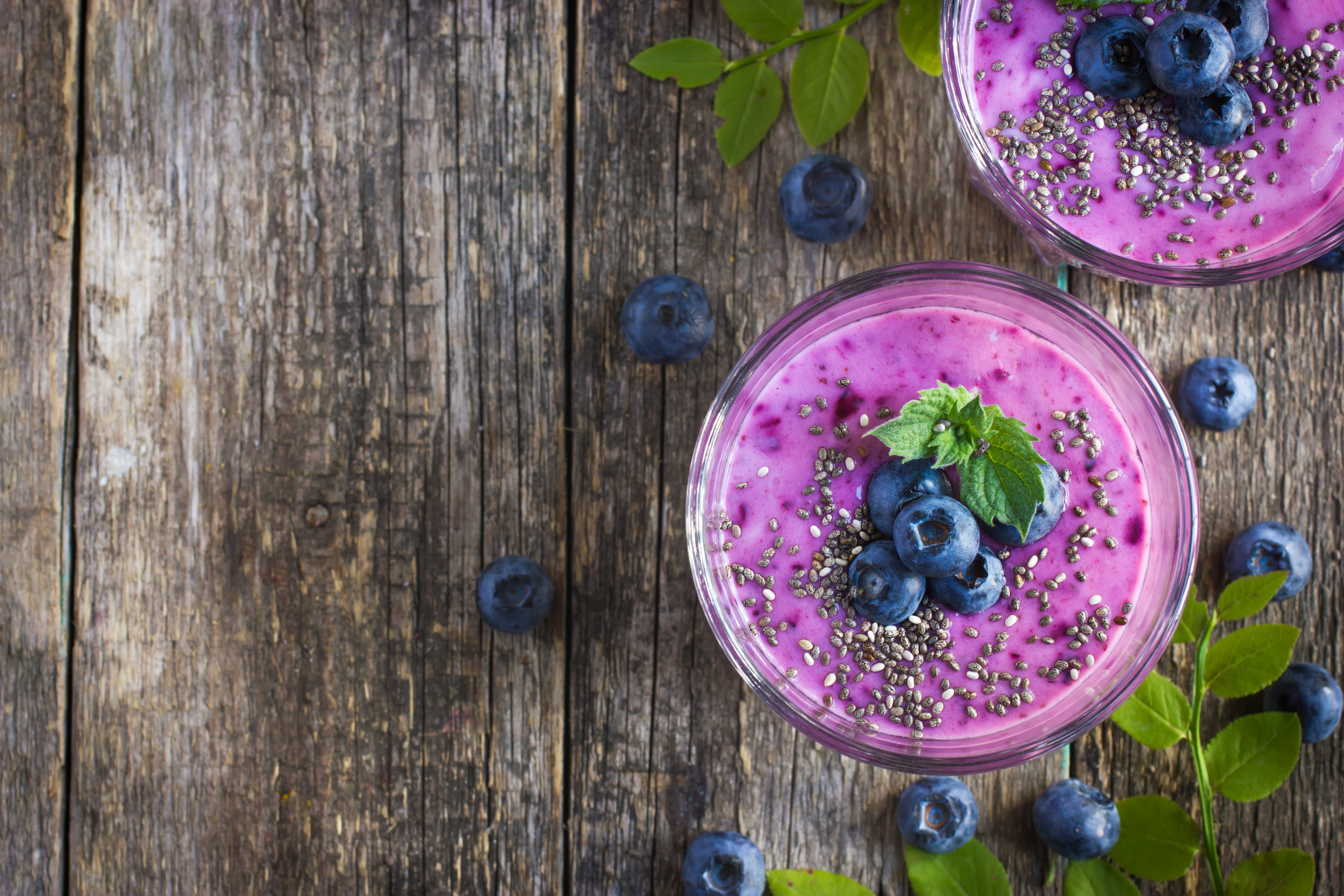 |
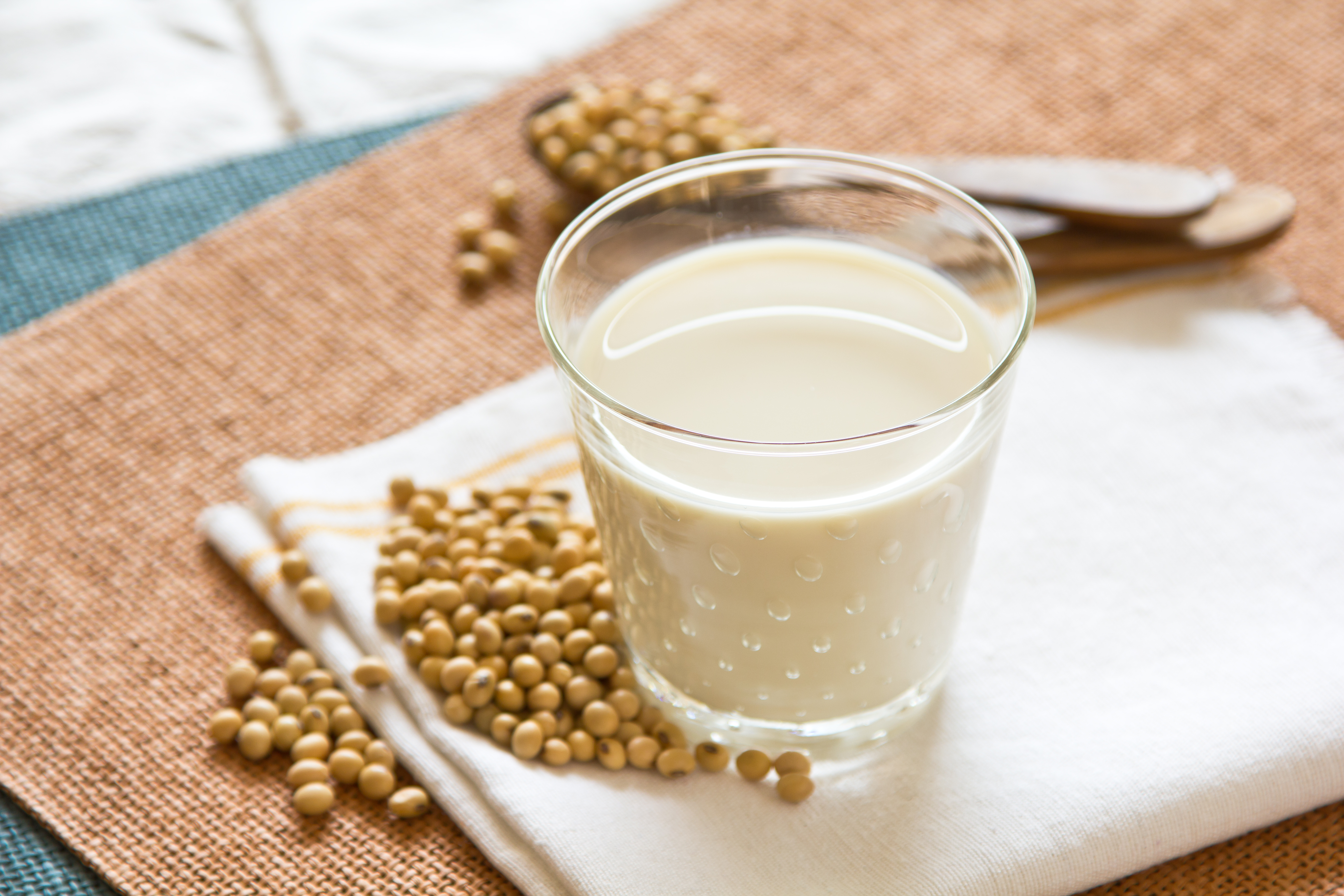 |
Soy
Soy comes from the soy plant, and is a member of the legume family, like green beans and lentils. It has been used by the Chinese, Japanese, and other eastern Asian nations for centuries. Soy is a very good source of protein and is also known as a complete protein. Research on soybeans has shown them to be effective in lowering of LDL, the bad cholesterol, therefore very good in preventing cardiovascular disease. Researchers at the University of Kentucky reviewed 43-research papers indicating that consumption of 30 gram of soy a day can decrease overall risk of cardiovascular diseases. Soy has also been very effective in reducing post-menopausal symptoms. It contains anti-oxidants such as genistein with its anti-cancer properties widely recognized. ¾ cup of cooked soy contains about 21 grams of protein which is the same as ½ cup of cooked chicken. One cup of soymilk contains about seven grams of protein. ¾ of cup of tofu contains about 17 grams of protein. Soy can come in forms of beans, milk, tofu (cured soy beans), and tempeh.
|
|
Buckwheat
Buckwheat (Fagopyrum esculentum) is part of the rhubarb family and originated in the Far East and Central Asia.
Buckwheat can be used to make cakes and bread, and can be used in soups and stew to give it texture. Buckwheat is a very nutrient rich food and is a complete protein as it contains all the essential amino acids including lysine (most vegetable sources of protein are not complete). It is also a good substitute for individuals who are sensitive to gluten. Buckwheat contains nutrients such as calcium, magnesium, copper and phosphorus. It has also good flavonoids (antioxidant) such as rutin and quercetin. Studies have shown buckwheat to be effective in lowering cholesterol and cardiovascular diseases and type 2 diabetes.
An additional source of complete protein is mycoprotein ("Quorn"), which is a fungus and is considered part of mushroom family. Another one is Ezekiel, a mixture of several incomplete protein sources such as wheat, barley, beans, lentils, millet, and spelt and then baking it into a bread. A complete protein that was created by Chinese monks is seitan. Seitan is made by mixing gluten (the protein in wheat) with herbs and spices, hydrating it with water or stock, and simmering it in broth. In order to make this into complete protein, one has to cook it in soy sauce to add the amino acid lysine.
|
 |
|
I hope this article can help you to eat meat scarcely for your own health and the health of our environment!
References:
http://www.pcrm.org/health/cancer-resources/diet-cancer/facts/meat-consumption-and-cancer-risk http://www.ncbi.nlm.nih.gov/pubmed/15309439 http://authoritynutrition.com/11-proven-benefits-of-quinoa/ http://www.ncbi.nlm.nih.gov/pubmed/24814038 http://www.forbes.com/sites/juliewilcox/2012/06/26/7-benefits-of-quinoa-the-supergrain-of-the-future/ http://draxe.com/7-hemp-seed-benefits-nutrition-p http://www.webmd.com/diet/truth-about-chia?page=1 http://www.dietitians.ca/Downloads/Factsheets/Health-benefits-of-soy.aspx http://www.thespectrum.com/story/life/features/mesquite/2015/10/26/eat-some-chia-seeds-health/74610378/ http://health.utah.gov/wic/pdf/forms_and_modules/Staff_Training_Modules/Basic%20Nutrition/basic%20nutrition%20module%205.11_files/Page322.htm http://authoritynutrition.com/11-proven-benefits-of-quinoa/ https://www.health.harvard.edu/plate/healthy-eating-plate https://www.harvardmagazine.com/2012/01/a-diabetes-link-to-meat heart-disease-and-stroke-statistics-2009-update-a-report-from-the-2 https://www.medicalnewstoday.com/articles/318472.phphttps://inhabitat.com/infographic-the-true-environmental-cost-of-eating-meat/ https://www.ncbi.nlm.nih.gov/pmc/articles/PMC4315380/http://www.heart.org/HEARTORG/Conditions/Cholesterol/AboutCholesterol/Atherosclerosis_UCM_305564_Article.jsp#.WyfMlmaZPVo https://www.cdc.gov/diabetes/pdfs/library/diabetesreportcard2017-508.pdf https://greatist.com/health/complete-vegetarian-proteins https://www.healthline.com/nutrition/foods/quinoa#section3
Thanks for visiting curenaturally.org, where ancient wisdom meet today’s science.
For questions or issues feel free to
Call 616-777-0608 or email Dr. Girgis directly at: contactcurenaturally@gmail.com
|
|
|
|
Additional Articles
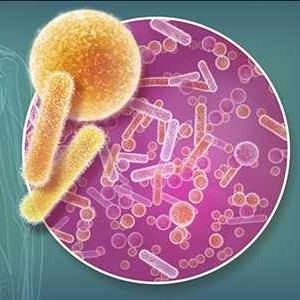
Diseases and the Importance of Bacteria Balance in the Gut.
Read More
|
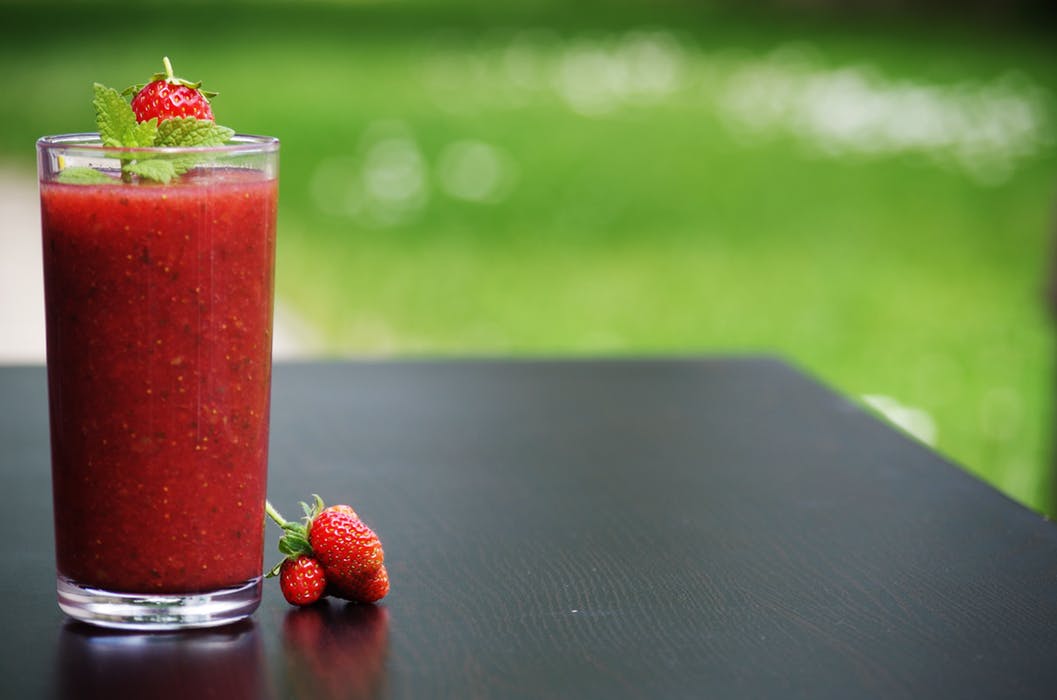
Is fasting good for you?
Read More |

Top 10 Foods for Beautiful Skin
Read More |
|
|
|
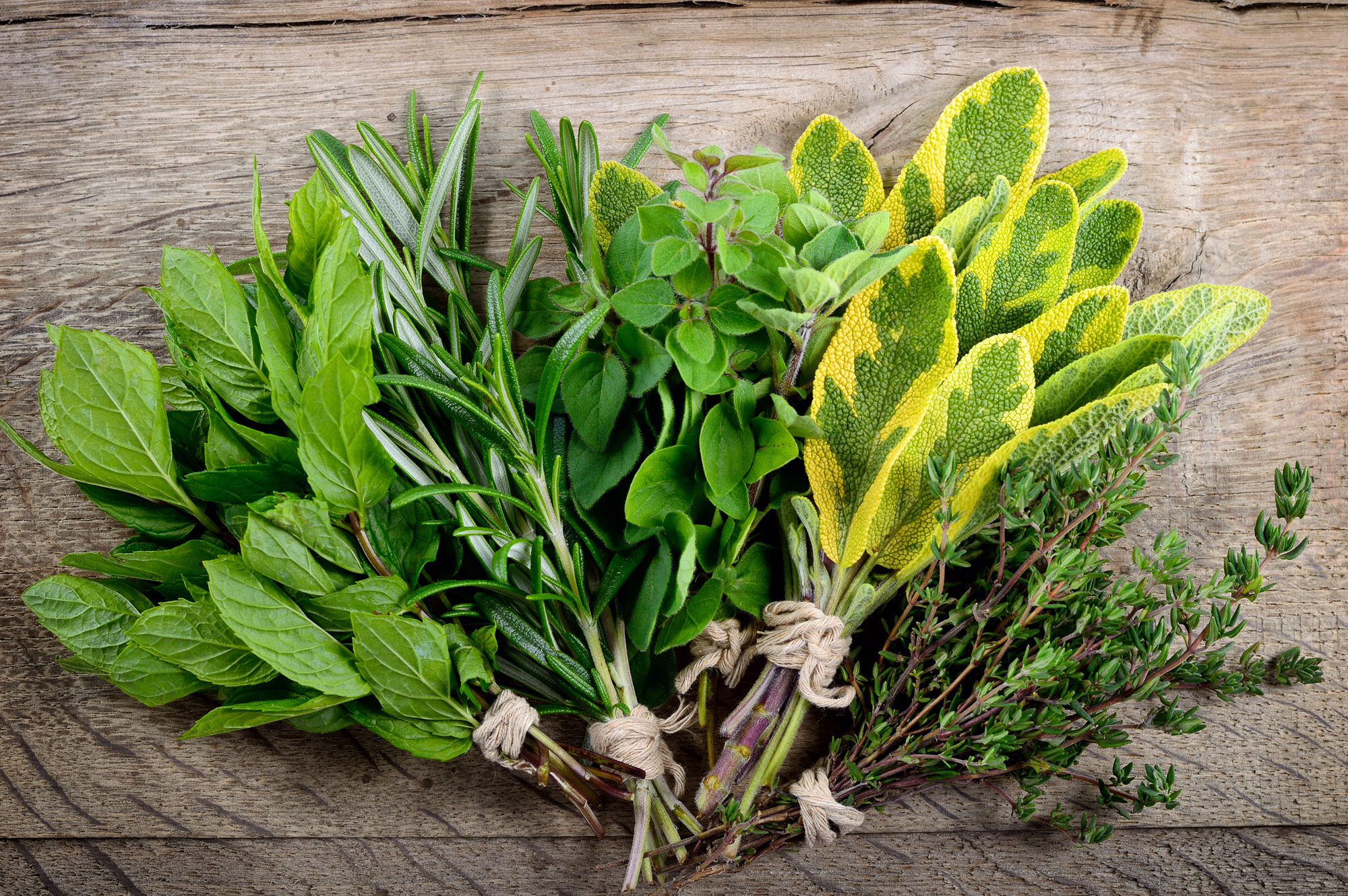
Leafy greens linked with slower age-related cognitive decline
Read More
|
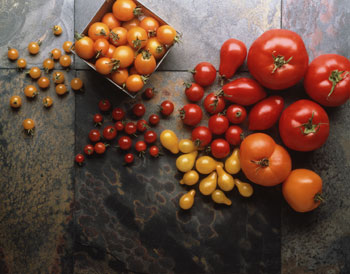
Compound in green tomatoes extends lifespan, healthspan in animal models, human cells
Read More
|
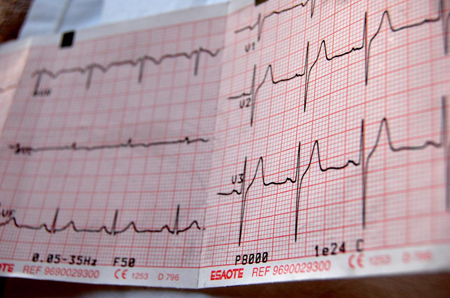
Few Important Steps In Prevention Of Heart Disease.
Read More |
|
|
|
|